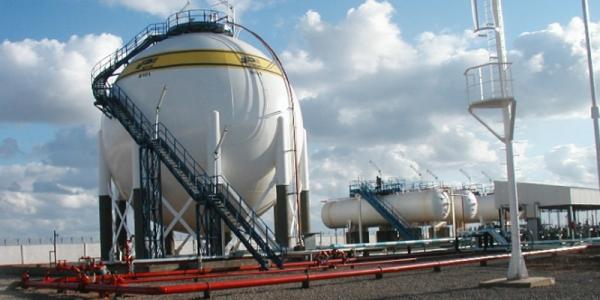
As the department of Petroleum resources cracks down on illegal Liquified Petroleum Gas(cooking gas) stations and poorly installed LPG facilities nationwide, it is important to know some key information around LPG installation and the plumbing of the lines using steel pipes.
To take LPG (cooking gas) from the storage tank and dispense into cylinders, an installer will have to connect the tank through the pumps, compressors to the dispensing units with steel pipes.. For this piece we will discuss the various schedules of steel pipes and their applications when it comes to the installation of LPG (cooking gas) plants in Nigeria.
WHAT IS THE MEANING OF THE TERM SCHEDULE?
“Schedule” is the standard of wall thickness that has been adopted by the American National Standards Institute. As per the Institute, the thickness of wall pipes varies from Schedule 10, Schedule 40, Schedule 80, and Schedule 160.
WHAT IS STEEL PIPE DIMENSIONS SCHEDULE?
Steel pipe schedule is an indicating method represented by ASME B 36.10, and also used in many other standards, marked with “Sch”. Sch is the abbreviation of schedule, generally appearing in the American steel pipe standard, which is a prefix of a series number. For example, Sch 80, 80 is a pipe number from chart/table ASME B 36.10.
THE PIPE SCHEDULE FORMULA:
Sch.=P/[ó]t×1000
P is the Designed pressure, units in MPa;
[ó]t is Allowable stress of materials under design temperature, Units in MPa.
WHAT DOES SCH MEAN FOR THE STEEL PIPE DIMENSIONS
As describing the steel pipe parameter, we usually use the pipe schedule, it is a method that represent pipe wall thickness with number. Pipe schedule (sch.) is not a wall thickness, but a wall thickness series. Different pipe schedule means different wall thickness for the steel pipe in the same diameter. The most frequently indications of schedule are SCH 5, 5S, 10, 10S, 20, 20S, 30, 40, 40S, 60, 80, 80S, 100, 120, 140, 160. The larger the table number, the thicker the surface pipe wall, the higher the pressure resistance.
For the purpose of this piece we will narrow down our comparison to Schedule 40 and 80 pipes as they are the most widely used for LPG and Gas Installations in Nigeria.
DIFFERENCE BETWEEN SCHEDULE 40 AND 80 PIPES?
There are several differences in the application, cost of the pipes, we would discuss in details below
- APPLICATION
“Schedule 40” and “Schedule 80” refer to the thickness of the walls of pipes. Pipes with Schedule 40 come with standard weight, and pipes with schedule 80 come with extra strength. The materials used for making Schedule 40 and Schedule 80 come from the same material.
Schedule 80 pipes have a thicker wall than Schedule 40 pipes. As such, Schedule 80 pipes are stronger than Schedule 40 pipes. Though both pipes are used in Gas construction and Installation work, Schedule 40 is used more often. Schedule is used more often in Nigeria at the Retail plants because of low pressure.
At the midstream level where the pressure is higher and a stronger pipe is needed, then the engineers would go for Schedule 80 pipes. Schedule 80 pipes are used where the pipes have to be exposed. But if there is no need for any extra strength, Schedule 40 pipes are sufficient.
- COST
The cost of Schedule 40 and Schedule 80 pipes are different because of the difference in the quantity of materials. As Schedule 80 pipes consist of more materials, the price is considerably higher than Schedule 40 pipes. Schedule 80 pipes are also more costly as the cost of production is greater. To get a better understanding of the local retail price in Nigeria, a 2 Inches one length (5.8metres) of schedule 40 pipes is NGN40,000 ($111) while the cost of a 2 Inches one length (5.8metres) of schedule 80 pipes is NGN62,500 ($174).
- WORKING AND BURSTING PRESSURE
The bursting pressures are based on Barlow's formula. The working pressures are based on factor 8.
Dimensions according ASME/ANSI B36.10/19.
THE WORKING AND BURSTING PRESSURE FOR SCHEDULE 40 PIPES

THE WORKING AND BURSTING PRESSURE FOR SCHEDULE 80 PIPES

SUMMARY:
- Pipes with Schedule 40 come with a standard weight, and pipes with Schedule 80 come with extra strength.
- Schedule 80 pipes are stronger than Schedule 40 pipes.
- Though both pipes are used in Gas and LPG construction and Installation work, Schedule 40 is used more often.
-
Schedule 80 pipes are used where the pressure is very high. But for retail LPG installations,
40 pipes are sufficient. - When comparing the weight, Schedule 40 pipes come in less weight than Schedule 80 pipes.
- As Schedule 80 pipes consist of more materials, the price is considerably higher than Schedule 40 pipes.
If you need to discuss any related steel and Gas Business development write us at gaspreneur@kiakiagas.com or call/whatsapp on +2348085269320
Sources:
https://www.engineeringtoolbox.com/wrought-steel-pipe-bursting-pressure-d_1123.html
http://www.abtersteel.com/news/products-news/difference-between-sch-40-and-sch-80-steel-pipe/
Image Credits:
https://www.engineeringtoolbox.com/wrought-steel-pipe-bursting-pressure-d_1123.html
https://tpf.eu/projects/lpg-bottling-plant-arzew/


